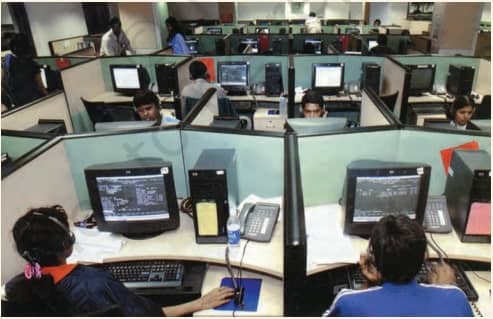NCERT Economics Class 10 | Production Across Countries
Topic & sub-topics covered: Production Across Countries: Globalisation and The Indian Economy (All single detail notes are exam-oriented).
We have discussed in-depth and exam-oriented pointers that can be asked in the board exam of class 10th about “Production Across Countries” which is taken from the NCERT Economics notes for class 10th chapter 4 “Globalisation and The Indian Economy“.
Download the NCERT Economics for Class 10th Chapter 4 Globalisation and The Indian Economy PDF
“Download the NCERT Economics for Class 10th Chapter 4 Globalisation and The Indian Economy PDF” is essential for students. It offers insights into globalization’s impact on India’s economy, aiding comprehension of economic integration’s nuances. Students gain access to in-depth analyses, case studies, and theories, enhancing their understanding.
NCERT Class 10 Economics Chapter 4 Globalisation and the Indian Economy Class 10 Notes PDF
The PDF facilitates convenient learning, covering globalization’s historical context, theoretical frameworks, and practical implications for India. It serves as a valuable reference for educators, policymakers, researchers, and business leaders, providing a comprehensive understanding of globalization’s effects on India’s economic development. Accessing this resource empowers stakeholders to navigate globalization’s complexities effectively, fostering informed decision-making and strategic planning.
Production Across Countries
1. Historical Perspective on Production and Trade:
- Historically, production was primarily organized within individual countries, with limited cross-border trade.
- Countries like India relied on exporting raw materials and food items while importing finished goods, depicting a traditional trade pattern.
2. Emergence of Multinational Corporations (MNCs):
- The landscape changed with the emergence of multinational corporations (MNCs) in the mid-20th century.
- MNCs operate across multiple nations, establishing offices and factories in regions with access to cheap labour and resources.
3. Objectives of MNCs:
- MNCs strategically choose locations for production to minimize costs and maximize profits.
- They seek regions offering favourable conditions for production, including low labour costs and abundant resources.
4. Impact of MNCs on Global Production:
- The presence of MNCs has transformed global production dynamics, influencing the distribution of manufacturing activities worldwide.
- They play a pivotal role in shaping international trade patterns and economic development in various regions.
5. Understanding MNC Operations:
- Students should grasp the significance of MNCs in the global economy and their strategies for optimizing production processes.
- This understanding helps analyze the interplay between multinational corporations, trade, and economic growth.
6. Global Production and Sales:
- The multinational corporation (MNC) in the example not only sells its products worldwide but also engages in global production.
- This signifies a shift towards increasingly complex organizational structures in production.
7. Complex Production Processes:
- Production processes are fragmented into smaller parts and distributed across different countries, showcasing the complexity of modern production methods.
- Each country contributes its unique advantages to the production process, leading to a synergistic global operation.
8. Strategic Location Benefits:
- China is highlighted for its role as a cost-effective manufacturing hub due to lower labour costs.
- Mexico and Eastern Europe are valued for their proximity to major markets like the US and Europe, facilitating efficient distribution.
9. Skill and Expertise Utilization:
- India’s significance lies in its highly skilled engineers capable of handling technical aspects of production.
- Additionally, India’s English-speaking workforce is tapped for customer care services, leveraging its educated youth population.
10. Cost Savings for MNCs:
- The dispersed production model across borders results in significant cost savings estimated at 50-60% for the MNC.
- This underscores the immense advantage for MNCs in diversifying production globally to leverage various countries’ strengths.
Example:
Spreading of Production by an MNC

1. Global Production Network:
- The multinational corporation (MNC) described operates on a global scale, illustrating a complex network of production.
- Different stages of production occur across various countries, showcasing international integration.
2. Design and Manufacturing Centers:
- Designing industrial equipment occurs in research centres in the United States, highlighting the role of developed countries in innovation and product development.
- Manufacturing of components takes place in China, reflecting the outsourcing of production to countries with lower labour costs.
3. Assembly and Distribution Hubs:
- Assembly of the products happens in Mexico and Eastern Europe, indicating the strategic location of these regions for cost-effective production.
- Finished products are distributed worldwide, underscoring the global reach and market presence of the MNC.
4. Outsourced Customer Care:
- Customer care services are outsourced to call centres in India, showcasing the utilization of skilled labour in emerging economies for service-related tasks.

